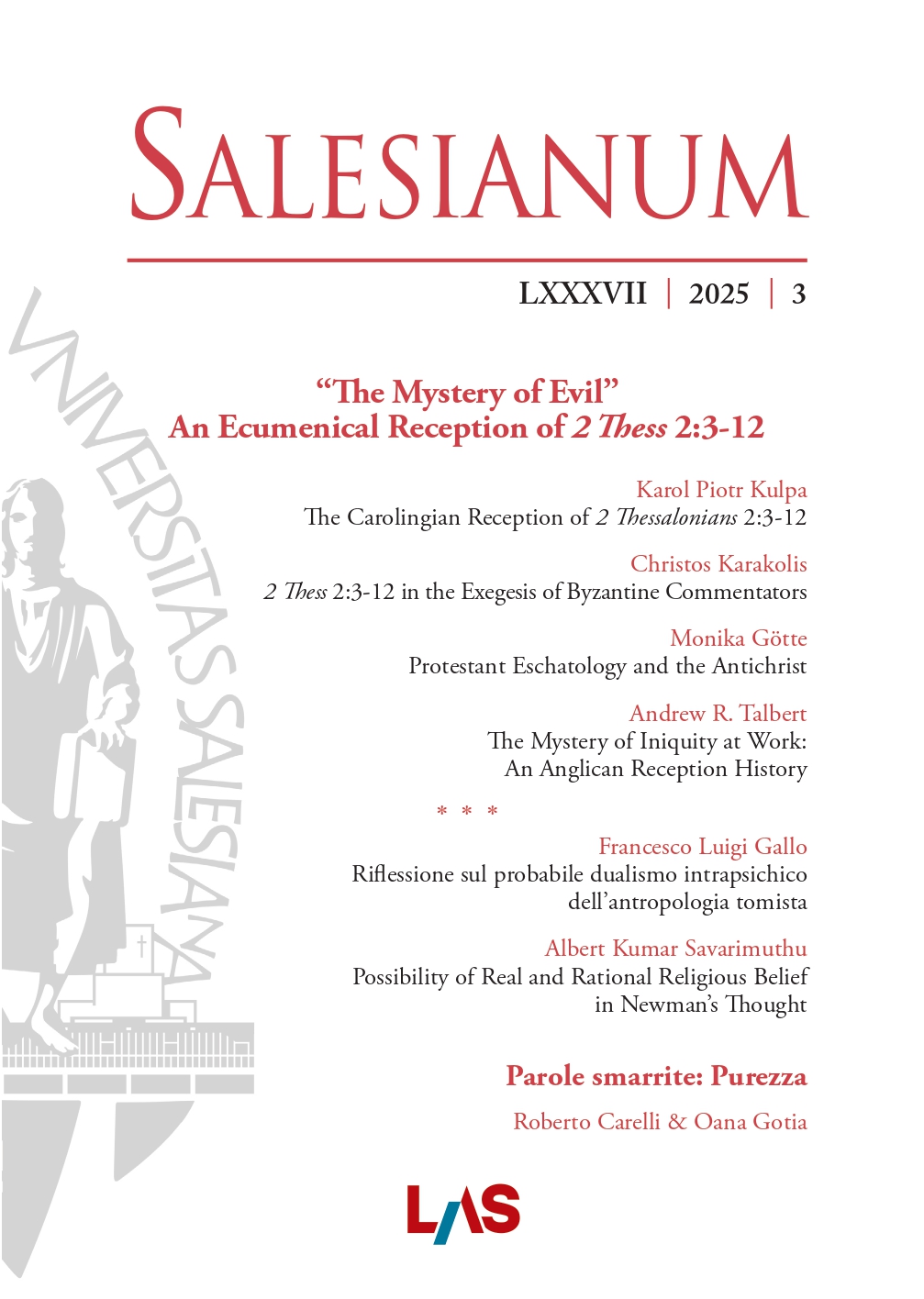יֵשׁוּעַ – Late Biblical Hebrew Name. Philological and Reception Study
Salesianum vol. 87 (2025) n. 1, 127-155
Section: Studia
Sommario
This article examines the evolution and reception of the popular biblical name יֵשׁוּעַ (yēšûaH) demonstrating its adherence to the Late Biblical Hebrew (LBH), which
emerged after the return of the Israelites from the Babylonian exile in the late sixth century B.C.E., and is found in post-exile biblical Hebrew books, in contrast to archaic
forms of the name in Classical Biblical Hebrew (CBH). The spelling change from CBH to LBH is a grammatical phenomenon of syncopation or dissimilation, though it was not a complete replacement of the classical form. The extra-biblical sources suggest that Masoretic Hebrew (MH) returned to the CBH form. The Greek spelling Ἰησoῦς was transformed into יֵשׁוּ , especially in the Medieval Jewish literature and polemical treatises against Christianity. The word’s lengthy and complex history exposes not only philological changes, but also its reception process, which gives information about the many causes, events, and individuals who stand behind it.
Parole chiave
יֵשׁוּעַ | יְהוֹֻשַׁע / יְהוֹֻשַׁע | Classical Biblical Hebrew | Late Biblical Hebrew | Reception
